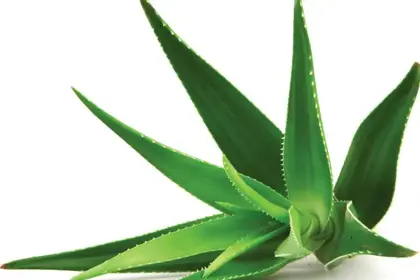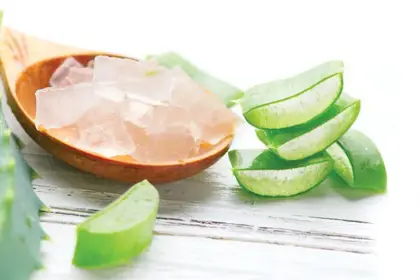Land of Aloe – Aruba’s Divine Plant
From Cleopatra to celebrities, aloe devotees have extolled the “divine” plant for its healing, health, and cosmetic benefits. Visitors to Aruba can try out a wide range of aloe products, see how they’re made and learn about the plant’s fascinating history.
Before we start, let’s straighten out some confusion about the name. Aloe refers to a genus comprising hundreds of flowering succulent plants. Aloe vera is the best known and most popular species in this family, but it’s commonly just called aloe for short, which is what we’ll do here.
Folklore has contributed significantly to the popularity of aloe and belief in its curative properties. The virtues of aloe have been praised for thousands of years by many ancient civilizations including Egypt, Persia, Greece, India, and Africa. Thought to originate in northern Africa, the plant’s name was derived from the Arabic alloeh meaning “bitter,” because of the bitter-tasting liquid found in the leaves. Aloe was also known in various languages as Lily of the Desert, the Plant of Immortality, and the Medicine Plant.
Millennia ago, when religion and medi-cine overlapped, illnesses were often regarded as demonic possession of the body and only a “divine” plant such as aloe supposedly had the natural power to exorcise the evil spirits. Egyptian scribes recorded use of the plant in 1500 BCE for treating burns, infections, and parasites.
It is said that Cleopatra kept her skin soft and young with aloe gel to help enti-ce Mark Antony. Queen Nefertiti repute-d-ly used the gel as part of her beauty routine as well. Even the Egyptian dead were embalmed with aloe for its antibacterial and antifungal qualities, in the hope that stopping physical decomposition could attain eternal life.
Diosco-rides, the physician and naturalist, took a more scientific approach centuries later. The “father of pharmacy” journeyed through the Roman Empire with Nero’s army researching new methods of medication. He described aloe as one of his favorite healing plants in several books of diagnoses, treat-ments, and prescriptions which were used as references for many years.
During the Crusades, the Knights Templar created a cocktail of palm wine, aloe pulp, and hemp, which they called the Elixir of Jerusalem. Although it sounds suspiciously like a medieval party punch, the good brothers believed that the concoction would add years to their health and life. Unfortunately, those killed in battle or burned at the stake were unable to confirm the effectiveness of the elixir.
More credible was Christopher Columbus’s belief in the healing powers of aloe. His ships carried aloe pot plants to treat the wounds of soldiers accompanying him to the New World.
Samurai warriors also rubbed liquid aloe on their bodies to relieve pain from sprains and strains.
What does aloe contain?
With its green serrated leaves and rosette shape, aloe contains a multitude of active ingredients, including vitamins A, C, and E, minerals, amino acids, enzymes, and antioxidants. Aloe is often used topi-cally to treat burns, abrasions, psoriasis, and other skin conditions. It’s marketed in the form of gels, creams, and juices.
Many cosmetic companies add aloe de-rivatives to skin care products such as make-up, tissues, moisturizers, soaps, sun-screens, shaving creams, and shampoos. Traditional Chinese medicine also considers aloe as a cool, moistening, yin tonic especially useful to treat skin irritation.
Aloe as a modern health food
Aloe’s widespread use as a health food is reflected in the numerous recipes for smoothies, salads, and many other dishes.Herbal medicine practitioners in some parts of the world prescribe aloe juices for a wide range of benefits and illnesses, including diabetes, arthritis, epilepsy, and asthma. However, no scientific evidence supports claims that aloe benefits such serious conditions.
Aloe on Aruba
Aruba’s climate and the dry soil are particularly suitable for the planting of aloe, one of the island’s major exports. Through careful cultivation methods, the plant has flourished and earned Aruba a reputation as one of the world’s finest producers of aloe.
Historically, aloe has played an important role in Aruba’s economy and culture, even figuring prominently in Aruba’s coat-of-arms. Before the arrival of the oil industry, aloe was an important source of income for the small cunucero or farmer and in the 19th century aloin resin from the plant found important markets in New York, London, and Hamburg.
In the 1950s Aruba accounted for about a third of the world’s aloe production. Market share declined as buildings replaced plantations, but the sales on the Internet have opened up new opportunities for the local industry. With the growing demand for natural products, aloe also has a bright future in applications as an effective alternative to synthetic agents.
Aruba also has links to the plant’s ancient history. In the 19th century a plantation established in Socotoro, was named after Yemen’s legendary island of Socotra, another aloe producer. Legend says Aristotle urged Alexander the Great to conquer the island for the aloe he used to treat his wounded troops.
Nowadays, aloe products are widely used by Aruba’s spas and hotels, while the Aruba Aloe Museum, Factory, and Store in Hato offers tours where you can learn more about the history and production of this fascinating plant. In fact, you don’t have to be Cleopatra, a conqueror of empires, or wounded in battle to find aloe useful during your visit to the island. Aruba’s own after-sun lotion is an excellent way to soothe your skin if you’ve stayed on the beach a bit too long.
by Richard Andrews



